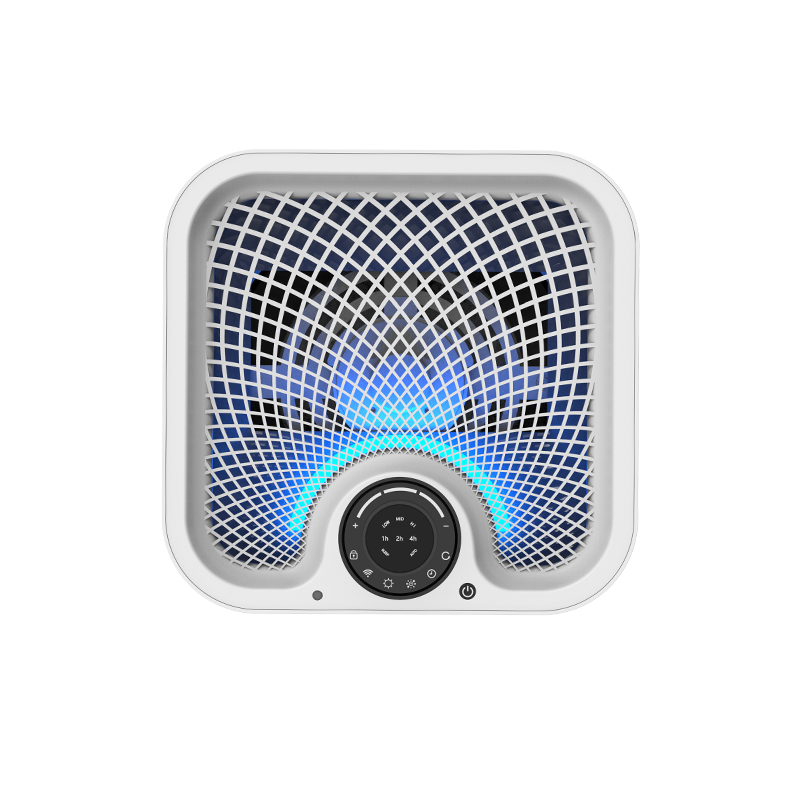In the medical environment, the operating room is one of the most critical areas, and indoor air quality has a significant impact on surgical procedures and patient safety. To ensure the highest standards of air quality in operating rooms, medical-grade air purifiers are being widely used. This article will explore the use of medical-grade air purifiers in operating rooms, along with their features, functions, and benefits.
Medical Grade Air Purifier Features and Functions:
A. The role of a high-efficiency filtration system:
Medical-grade air purifiers use high-efficiency filtration systems that can remove tiny particles and pollutants in the air, including bacteria, viruses, dust, and more. This filtration system usually consists of multiple layers of filters, each with a different filtration effect to ensure fresh indoor air.
B. Importance of Viral and Bacterial Filtration:
There is a serious risk of infection in the operating room, and the spread of microorganisms such as viruses and bacteria can lead to surgical infections. Medical-grade air purifiers have efficient virus and bacterial filtration capabilities, which can effectively remove microorganisms suspended in the air and reduce the risk of infection.
C. Removal ability of formaldehyde and other harmful substances:
Disinfectants and other chemicals used in operating rooms may release harmful gases such as formaldehyde. Medical-grade air purifiers can remove harmful substances such as formaldehyde to ensure the safety and cleanliness of the air in the operating room.
Medical grade air purifier applications in operating rooms:
A. Purifier location and size selection:
Medical-grade air purifiers in operating rooms should be selected based on the size and specific needs of the operating room. Typically, the purifier should be placed close to the operating table to ensure optimal purification.
B. Operating modes and control settings:
Medical-grade air purifiers should be equipped with multiple operating modes and control settings so that operating room personnel can make adjustments based on actual needs. For example, an automatic mode can be set to increase the efficiency of the purifier during surgery.
C. Indoor air monitoring and maintenance:
Medical-grade air purifiers in operating rooms should be equipped with indoor air monitoring systems to monitor air quality in real time and provide feedback on the operating status of the purifier. In addition, regular maintenance and filter replacement are necessary to ensure the normal operation of the purifier.
Benefits of Medical Grade Air Purifiers:
A. Reduce the risk of surgical infection:
Medical-grade air purifiers can remove germs and viruses in the air, reduce the incidence of surgical infections, and improve the success rate of surgery.
B. Improve the air quality in the operating room:
Medical-grade air purifiers can effectively remove harmful substances and odors in the operating room, keep the air fresh, and provide a good working environment for operations.
C. Provide a safer environment for health care workers and patients:
By purifying the air in the operating room, medical-grade air purifiers provide medical staff and patients with a safer, cleaner working and treatment environment and improve the quality of medical care.
Premium Medical Grade Air Purifier
If you want to get high-quality medical-grade air purifiers, you might as well try leking. As a professional medical-grade air purifier manufacturer, leking can provide you with high-quality products and excellent services. Welcome to contact us for detailed ordering information. !
The application of medical-grade air purifiers in operating rooms is crucial. By removing microorganisms and harmful substances in the air, it improves operating room air quality and reduces the risk of infection. When selecting and using a medical-grade air purifier, reasonable configuration and settings should be made based on the needs and scale of the operating room. The application of medical-grade air purifiers will provide medical institutions with a safer and cleaner surgical environment, ensuring the health and safety of medical staff and patients.




